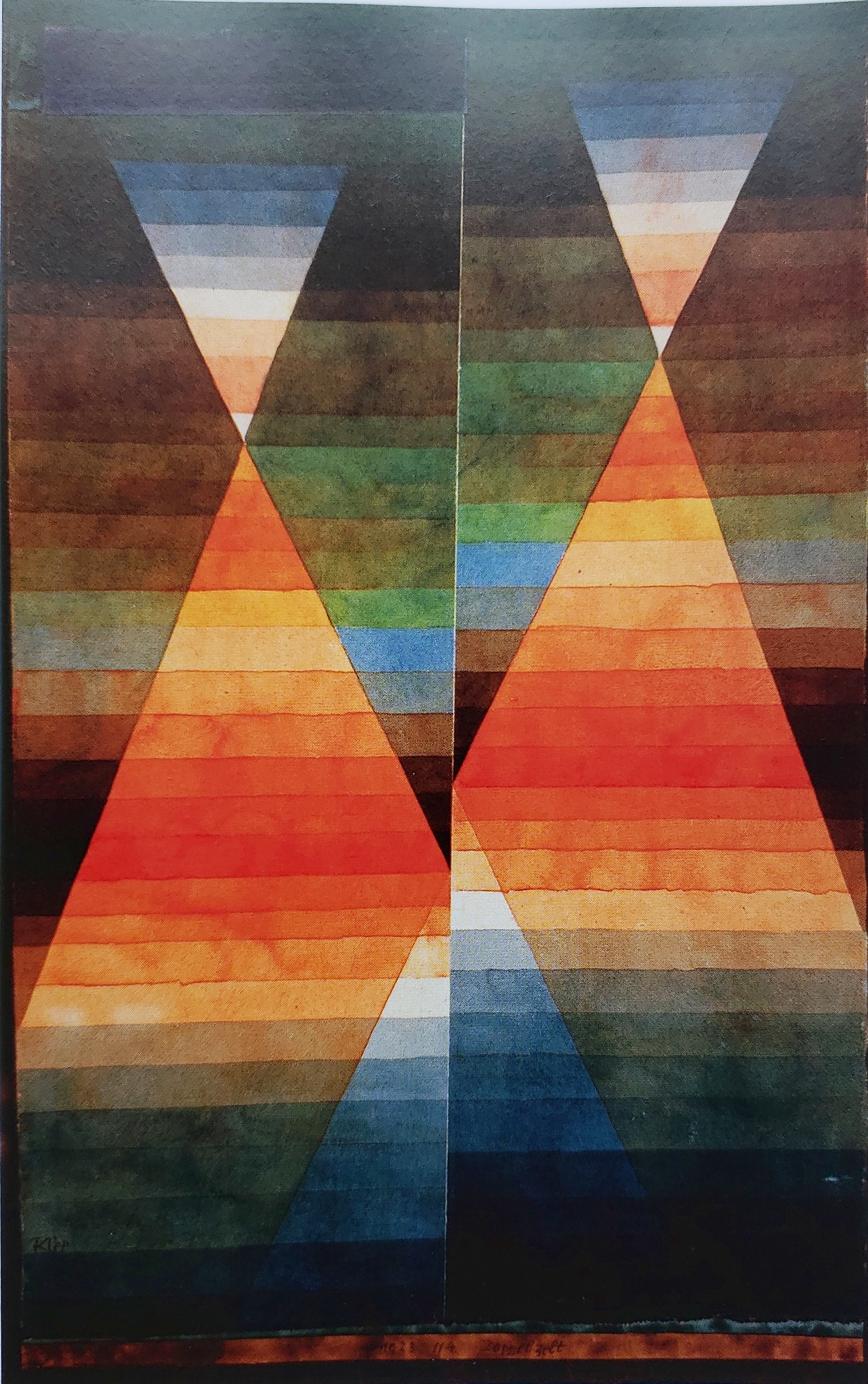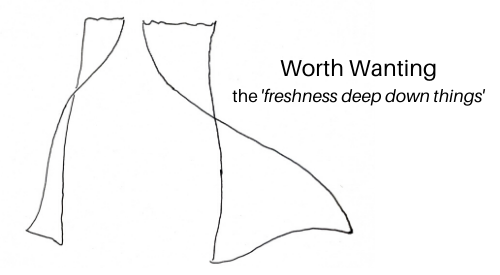
So there I was, sitting in front of a window, my computer and phone on a table within easy reach, phonebanking for a political candidate. Pull up a name and number, dail, turn on speaker phone, wait, wait. Recording? Hang up, log ‘not home’, and pull up another number. Or else, “Hello, who is this?” and a conversation begins. The people are nice and the conversations good, but…. What am I to do with myself while the call is going through.
So, I opened up a book of the work of Paul Klee, the early twentieth century Bauhaus artist. (Klee = clay) The book fell open at random to Two Tents, painted in watercolor on paper on cardboard in 1923, Luzern Sammlung Rosengart.
Not the most exciting of Klee’s work, I thought, but let that be. In those few seconds of waiting each call required I encountered Two Tents for the first time.
At first I thought ‘easy’. No figures, no words, just two triangles like two tepees. So maybe there’s a native American theme. Is that blue in the center crease water? Green for trees, dark brown for earth and maybe mountains.
As I looked at it more, the more unsettled my eye became. Those two points of focus in the top were not places where my eye rested. Nor was the slip-slide triangle that grabbed my attention at the bottom, a place of repose. I felt the shear almost viscerally. I wanted things to line up and they just wouldn’t. Two exploding color points and a painful dislocation: I was experiencing a palpable visual disquiet whenever I glanced at the picture. Perhaps that was the intention.
A simple thing: stripes, colors, diagonals and an offset, yet intriguing. He’s Klee. It came naturally to him. (Do read his writings for students). I find much of his work subversive in the same way, and delightful because of it.
If the brief flashes of attention I was able to snatch from phonebanking made this Klee come alive, well, blessing upon blessing.
____________________
Writing about encounters is tricky when others are actual living people. It’s so much easier to write about myself and plants, or pictures. An encounter must have a certain confidentiality if it is to be for itself. When, afterwards, I reflect on encounters I’ve had with people, I focus on the signs and expressions that spoke to the livingness of each, and on the encounter itself; on my experience (the venturing forth, the risking and putting at risk, the soul searching, the delighting in and coming to enjoy); and on myself as encounterer.
